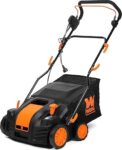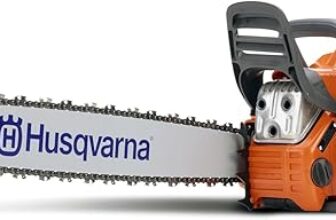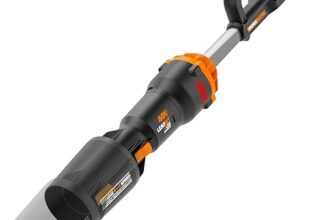
6-Step Guide to Power Raking: It Removes Thatch Fast and Safely
Why Power Raking Matters — Faster, Cleaner Lawns
Power raking quickly strips stubborn thatch, restoring air, water, and nutrient flow so turf breathes and roots grow stronger. Homeowners should use it when buildup chokes grass; proper technique prevents damage and speeds recovery for a cleaner, healthier lawn now.
Tools and Prep You’ll Need
They’ll need:
5 Steps to Power Rake or De-Thatch Your Lawn (DIY Guide)
Step 1 — Assess the Lawn and Thatch Layer
How will they know if power raking is necessary? (Spoiler: a screwdriver test tells all.)Inspect the lawn systematically.
They should use a soil probe or spade to remove a 3–4 inch plug and separate layers: green grass, brown thatch, and mineral soil. If thatch exceeds about 1/2 inch, the turf will benefit from power raking.
Check these specifics before starting:
For example, if a backyard plug reveals a 3/4‑inch brown mat in full sun, power raking is appropriate once the grass’s recovery season arrives.
Step 2 — Choose the Right Equipment and Settings
One machine doesn’t fit all — choose power and tines like a pro, not a gambler.Choose equipment by lawn size and frequency: weigh rental vs. purchase. For small yards, select a lightweight electric dethatcher; for larger lawns, pick a gas walk‑behind power rake with adjustable tine depth.
Important features to check:
Test settings: start shallow, try a small patch, and inspect plugs. If unsure, rent and perform several light passes rather than risk scalping with an aggressive depth.
Step 3 — Prepare the Lawn for Power Raking
Skip this and enjoy a battleground, not a lawn — preparation makes the difference.Mow to remove roughly one‑third of the turf height (for example, from 3″ down to about 2″) so tines reach the thatch. Mark sprinkler heads, rocks, shallow cables, and low limbs with flags or spray paint.
Remove toys, sticks, and large clippings; clear children’s play equipment and garden tools. Lightly water the day before only if soil is very dry — moist turf flexes and the machine bites better, but stop well before work to avoid mud.
Calibrate the machine on a lawn edge: set a shallow test depth, run a short strip, then inspect and adjust. Plan a straight, parallel route to minimize overlap and tight turns.
Step 4 — Power Raking Technique: Passes, Angles, and Pace
Think surgical — slow, controlled passes beat a frantic charge every time.Begin with a conservative pass; they should set a shallow depth and adjust incrementally after inspecting removed material. Use overlapping passes (about 10–20% overlap) and change direction on the second or third run to lift thatch uniformly.
Maintain a steady pace: too fast yields poor pickup, too slow risks gouging—aim for a brisk walking pace. For stubborn patches, make multiple shallow passes rather than one deep cut (for example, two passes at half depth beats one full‑depth pass).
Avoid scalping by watching crown height; stop when soil shows and back off immediately. Periodically check the collected thatch to gauge progress. On slopes and along edges, reduce depth, slow the pass, and work uphill or sideways as needed to prevent turf damage.
Step 5 — Aftercare: Raking Out and Cleaning Up
The work isn’t done when the machine stops — this cleanup makes the weekend worth it.Ensure they collect the removed thatch immediately to prevent smothering. Use a leaf rake, mower bagger, or blower to move debris onto tarps for composting or disposal — for example, drag two tarps and dump into a wheelbarrow.
Inspect the turf for scalped areas and topdress any exposed soil with a thin layer (about 1/8–1/4 inch) of topsoil or coarse sand. Rake stubborn clumps by hand for a final tidy.
Clean and service the power rake per manufacturer instructions; have them remove accumulated material from tines and check fasteners. Dispose of debris promptly to prevent pests and disease carryover.
Step 6 — Recovery: Watering, Fertilizing, and Follow-up
This is when the lawn repays the effort — small investments now speed green-up.Begin recovery with a light irrigation to settle soil and encourage root growth; they should moisten the top 1″ without creating puddles (for example, two 10–15 minute cycles with a sprinkler).
Apply a balanced, slow-release fertilizer matched to the grass type and season; they should follow label rates. Overseed thin areas immediately and press seed into contact with soil for best establishment.
Finish Strong: Maintain the Gains
When done correctly, power raking revives a lawn quickly; they should combine it with sensible aftercare—regular mowing, watering, and occasional aeration—plus ongoing maintenance to keep thatch controlled and enjoy healthier turf year‑round. Ready to commit?














Great guide — clear and to the point. Quick question: for Step 2, is it better to rent a heavy-duty machine or use a lighter one and make extra passes? I’m on a small yard but have thick thatch in patches. Also, any recommendations for blade settings if I rent locally?
If your yard is small but has patchy thick thatch, a lighter machine with a few extra passes is usually kinder to the turf. For rentals, ask for adjustable tine depth and start conservative — you can always go deeper. Remember Step 1: assess the layer first so you don’t overdo it.
I rented a mid-range unit last year and it worked fine — did two shallower passes on thin sections and one deeper pass on the bad spots. Also saved time by doing the worst areas first.
If my lawn could talk it would say “thank you”… or maybe “stop poking me with metal teeth.” Either way, great step-by-step. 😆
Okay, real talk: I was intimidated by the machine but followed Step 2 and watched a couple of vids. Ended up doing it myself and felt like a backyard ninja 😂
Couple of practical things I wish someone told me:
1) Lower tine depth gradually — don’t trust the dial at max from the start.
2) Aftercare is underrated — my lawn actually greened up more after 2-3 weeks when I followed the suggested watering/fertilizer routine.
3) If you have shade areas, be gentler there — they recover slower.
Anyone know if it’s okay to use compost tea after raking, or is that too much?
Agreed on the dial trick — I started shallow and increased. Felt way safer and still got good results.
Compost tea = yes but dilute. Too strong and you risk fungal issues in dense shade.
Love the backyard ninja image. Compost tea can be a nice boost as long as it’s well-made and not overly strong. Use it as a light, occasional supplement rather than a replacement for starter fertilizer and keep an eye on moisture levels.
I used compost tea once and saw a mild improvement — just don’t oversaturate. Also, cover shaded spots with a thinner pass like you said.
Also, check local regs — some areas frown on unregulated compost tea runoff. Weirdly specific but saved me a headache.
On Step 4: passes, angles, and pace — the guide mentions angling the machine slightly. How much angle are we talking? 15 degrees? 45? Also, is it better to go slow and steady or cover more ground faster and risk missing deeper pockets?
Think gentle angles — around 10–20 degrees is enough to help the tines lift thatch without gouging. Slow and steady wins here: a slower pace lets the tines pull more debris. If you rush, you’ll miss the deep pockets.
Yep, slow is better. I usually do overlapping passes at a walking pace. You’ll see the difference in the removed material.
Also try a test strip first. Adjust angle/speed based on how much comes up — it’s more art than science.
Tried this last weekend — followed Steps 5 and 6 closely and my lawn looks so much better already. A few notes from my experience:
– Watered lightly the day after to ease stress
– Waited a week before fertilizing (used a slow-release)
– Did a light overseed after raking
Anyone else have tips for timing fertilization vs overseeding? I was nervous about burning the new seed.
I topdressed with a thin layer of compost before overseeding and it helped germination. Fertilized 2 weeks after germination started.
Nice results — glad it helped. For timing: if you’re overseeding, wait a few days after seeding to fertilize, and stick with a starter fertilizer that’s low in salt (or a labeled starter blend). Slow-release is a safe bet; avoid high-nitrogen quick-release right on top of seed.
Good point about heavy rain — consider a light straw cover if a big storm is expected right after seeding.
Semi-related: be careful with heavy rains after overseeding — it can wash seeds away. Anchor them with a light roll or rake.
Wow, this guide was super helpful — thanks!
I followed the Step 3 prep checklist and it made a huge difference.
I did forget to mark sprinkler heads though and almost tore one out, so PSA: flag everything you can’t afford to replace.
Also, I noticed the guide mentions raking out before cleanup — any tips for making the debris pile up less messy when using a tarp?
(I used the tarp + leaf blower trick and it helped, but curious if there’s a pro method.) 😅
Good tip about marking sprinklers — I’ll add that to the guide. For tarp handling: fold the tarp into a funnel shape so debris slides to one corner, then lift that corner into a wheelbarrow. Using a leaf blower to concentrate the pile beforehand is smart — just work from the outside in.
Also note: avoid the tarp method if the thatch is soaking wet — it’ll get heavy and harder to move. Let it dry a bit first.
Tarp + blower is exactly what I do. Also, dampen very dry thatch a little before raking so it clumps instead of flying everywhere.
Pro method: rent a small lawn vacuum or use a tarp and straddle it with someone else. Not glamorous but makes cleanup way faster.
Lol re: sprinklers — spent an hour fixing one once. Now I flag them with bright flagging tape. Cheap and lifesaver.
When’s the best season for power raking around here? Guide mentions recovery and follow-up but not ideal timing. I’m in a temperate zone with hot summers and cool, wet springs.
Fall worked best for me — cooler temps and rains helped seed and repair quickly.
For a temperate zone, early spring (just as grass breaks dormancy) or early fall (so there’s time to recover before winter) are usually best. Avoid the hottest part of summer and times of drought — recovery will be tougher then.
Safety note: don’t forget eye and ear protection. Power rakers fling a lot of stuff. Gloves and long sleeves saved me from a couple of nasty scrapes. Also, check for nails or sharp rocks before starting — found a hidden spike in my yard and that woulda been ugly.
Totally — Step 3 should really emphasize a safety sweep. Hard hat is overkill for most residential yards, but safety glasses, ear protection, and sturdy shoes are essential. I’ll add a checklist.